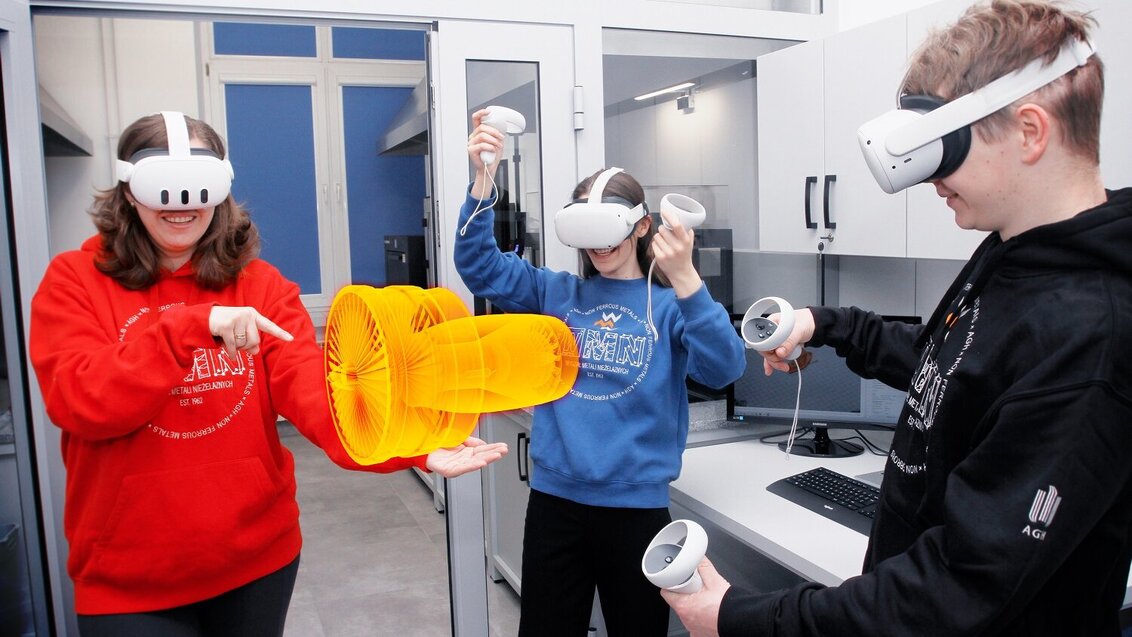A new educational laboratory for 3D prototyping and printing has just been launched at the Faculty of Non-Ferrous Metals. It is intended above all for students of Ecodesign and Digital Transformation of Material Technologies, a field of study which as of the current academic year is run jointly by two faculties: of Non-Ferrous Metals and of Humanities.
Owing to funding from the Excellence Initiative – Research University programme, the new lab has been equipped with cutting-edge 3D printers and appropriate software enabling students to design prototypes and 3D print them applying practically all of the currently available methods, including even 4D print methods that with incremental techniques allow to create smart parts reacting to water and increase/decrease of temperature by e.g. changing their shape. As a result students will learn about the capabilities of state-of-the-art incremental technologies and gain skills related to various 3D printing methods used in plenty of fields. It allows them understand the specificity of technology not only as regards the technical parameters of the obtained product but also of the printing process itself.
As emphasised by Professor Tadeusz Knych, Dean of the Faculty of Non-Ferrous Metals: “Ecodesign or, more broadly, sustainable development, digital transformation, and people are the pillars of the European industry in the course of its transformation into 5.0. It requires moving much of the design and validation work to the virtual CAD/CAM environment, accelerating the prototyping and production processes thanks to the most modern 3D incremental techniques, a change of the approach to the design of processes and products so that they could be safe and reliable, energy- and material-efficient, environmentally friendly, as well as meet the needs of the end-users better. These are the challenges that are currently becoming a vital part of student education, embedded in the AGH University strategy and the Faculty’s mission.”

 Pre-election meeting with a candidate for the position of rector
Pre-election meeting with a candidate for the position of rector  Agreement on cooperation with OPAL-RT
Agreement on cooperation with OPAL-RT  Krakow DIANA Accelerator consortium members with an agreement
Krakow DIANA Accelerator consortium members with an agreement  Meeting with the Consul General of Germany
Meeting with the Consul General of Germany  More Academic Sports Championships finals with medals for our students
More Academic Sports Championships finals with medals for our students  Launch of AGH University Student Construction Centre
Launch of AGH University Student Construction Centre  Bronze for our swimmers at Academic Championships
Bronze for our swimmers at Academic Championships  Smart mountains. AGH University scholar develops an intelligent mountain rescue aid system
Smart mountains. AGH University scholar develops an intelligent mountain rescue aid system